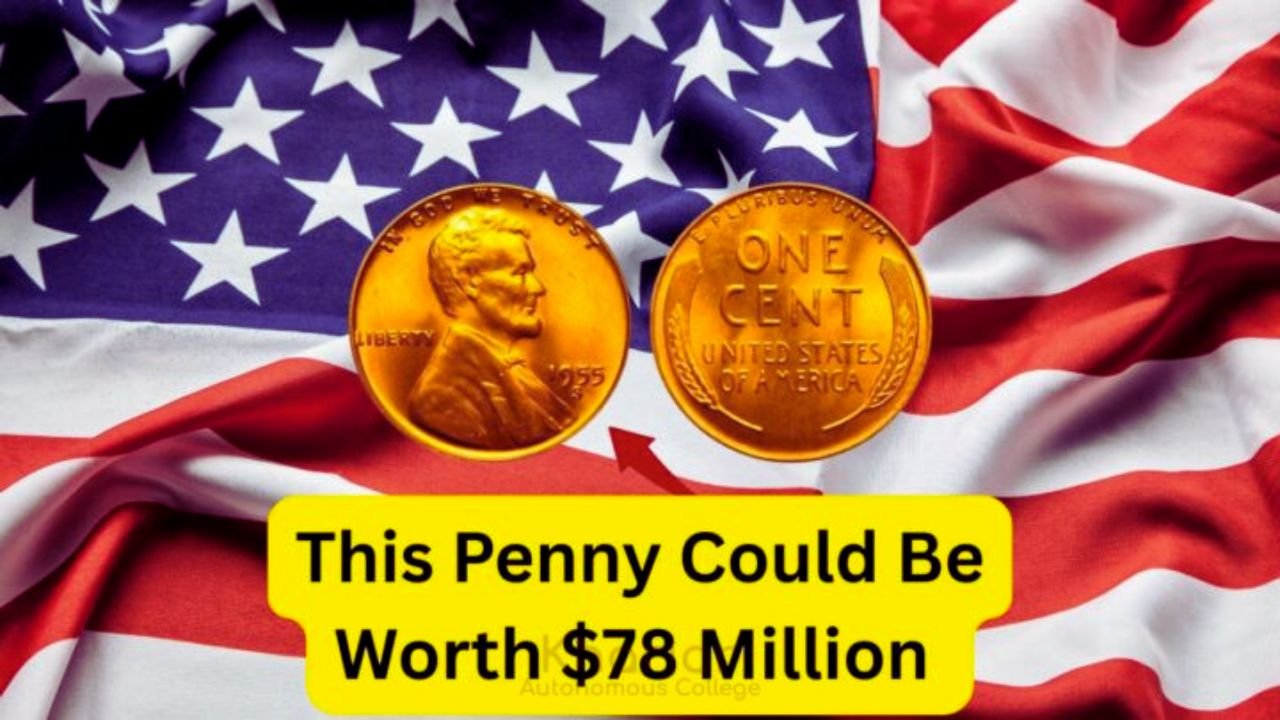The Lincoln Wheat Penny, a small copper coin found in pocket change for decades, might just be a hidden jackpot. Some of these pennies, first minted in 1909, have sold for millions, with rumors swirling that a rare one could be worth as much as $78 million. Could one really be floating around in circulation today? Let’s explore the history, value, and secrets behind these coins that turn spare change into a fortune.
A Penny with a Historic Design
The Lincoln Wheat Penny was created to honor President Abraham Lincoln’s 100th birthday in 1909. Designed by Victor David Brenner, it was the first U.S. coin to feature a real person’s face. The front shows Lincoln’s profile, while the back has two wheat stalks framing the words “ONE CENT.” The design ran until 1958, and billions were made, but a few rare ones stand out. These special pennies, especially from certain years and mints, are what collectors dream about.
Why Some Pennies Are Worth Millions
The value of a Lincoln Wheat Penny depends on its year, mint mark, and condition. For example, a 1943 bronze penny mistakenly struck in bronze instead of zinc-coated steel during World War II sold for $1.7 million in 2010. Only a handful of these exist, and rumors of a $78 million valuation come from speculation about an ultra-rare version in pristine condition. Other key dates, like the 1909-S VDB (with the designer’s initials) or the 1955 doubled-die penny, can fetch hundreds of thousands. Here’s what makes a penny valuable:
| Factor | Details |
|---|---|
| Rarity | Few exist, like the 1943 bronze (10-20 known) |
| Condition | High-grade (MS-67 or better) boosts value |
| Mint Mark | “S” (San Francisco) or no mark can be rare |
| Auction Record | 1943 bronze sold for $1.7M in 2010 |
Could One Still Be in Circulation?
Believe it or not, it’s possible though very unlikely that a super-valuable Lincoln Wheat Penny is still out there. Billions of these pennies were circulated, and some rare ones might be hiding in old jars, piggy banks, or even your change. The 1943 bronze penny, for instance, was only discovered years after it was minted. People didn’t notice the error until collectors started looking closely. However, most high-value pennies have been found by now, and the odds of finding a $78 million one are slim, like winning the lottery.
The $78 million figure is likely hype, tied to unverified claims about a perfect-condition rarity. Still, collectors have found valuable pennies in circulation before. A 1969-S doubled-die penny, worth up to $25,000, was found in change as recently as the 1990s. So, while a mega-million-dollar penny might not be in your pocket, lesser treasures could be.
How to Spot a Valuable Penny
Want to check if your penny is a winner? Start by looking at the year and mint mark (a small letter under the date, like “S” for San Francisco or “D” for Denver). Key dates to watch for include 1909-S VDB, 1914-D, 1922 (no mint mark), 1931-S, and 1943 bronze. Next, check the condition—shiny, unworn pennies are worth more. Finally, beware of fakes. Counterfeiters alter dates or mint marks to trick buyers.
- Look for clear, sharp details on Lincoln’s face and the wheat stalks.
- Use a magnifying glass to spot doubled-die errors (letters or numbers look doubled).
- Get rare finds graded by PCGS or NGC to confirm authenticity.
- Check old coin rolls from banks or estate sales for hidden gems.
The Thrill of the Hunt
The Lincoln Wheat Penny is more than just a coin—it’s a piece of history that sparks dreams of striking it rich. While a $78 million penny is probably a myth, coins worth thousands or even millions are real and have been found before. The next time you get change, take a second look. That humble penny might just be a ticket to a fortune, hiding in plain sight. Keep searching, because the thrill of finding a treasure is what makes coin collecting so exciting!
